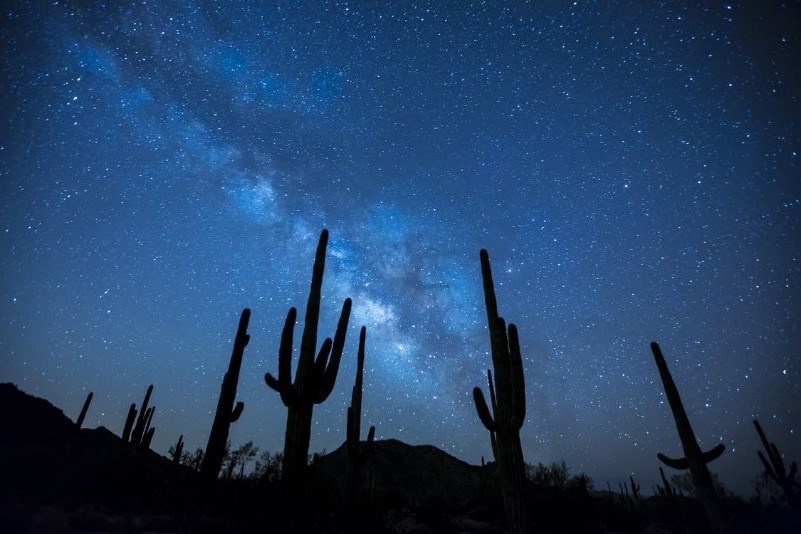Last updated: March 15, 2023
Article
Night Skies

The National Park Service’s mission is to preserve unimpaired natural and cultural resources, including night skies. The NPS Night Skies Team has been monitoring night sky brightness in some hundred parks, and nearly every park showed at least some light pollution. Light pollution is the introduction of artificial light into the natural environment.
Approximately 35 percent of light is wasted by unshielded or poorly aimed outdoor lighting, this adds up to about three billion dollars in energy lost to light pollution. In addition to the cost of unnecessary lighting, about 15 million tons of carbon dioxide is emitted to power outdoor lighting causing direct harm to the environment.
The Importance of Night Skies
The night sky provides breathtaking views and is crucial to the functioning of wildlife and ecosystems. Wildlife is disrupted by artificial light and suffers as a result.
The natural night sky is important for nocturnal animals like armadillos and owls that rely on darkness to hunt, mate, and fill their roles in the ecosystem.
Moths are primarily nocturnal and search for food at night. Attracted to the artificial light created by humans, moths become vulnerable to predators or are killed as a direct result of the heat of a lamp. Moths are important pollinators and contribute to the greater ecosystem.
Sea turtles rely on moonlight as they reproduce. Nesting females and hatchlings rely on moonlight to guide them to the sea. Artificial light guides the turtle hatchlings away from their marine habitat, putting them at risk of dehydration, predators, or being run over by vehicles. See how volunteers in Florida are working to help turtle hatchlings make it to sea at Gulf Island National Seashore.
Concessioner Involvement
Some concession contracts include requirements to protect the night sky. For example, concessioners who provide vending machines are often required to reduce night light pollution from these machines. More information on managing lightscapes can be found at Night Skies and the NPS Campground Design Guidelines include guidance on both indoor and outdoor light.

NPS Photo
Strategies for Reducing Light Pollution
The International Dark Sky Association (IDA)’s five principles for responsible outdoor lighting practices advise that lighting should be useful, targeted, low set, controlled, and warm in color. Concessioners should ask themselves the following questions to identify where night lighting can be improved:
-
Does the area need lighting at all? For example, reflective signs along roadways may be sufficient. In campground areas, most visitors bring flashlights or headlamps. Additional lighting may not be needed.
-
Is the lighting placed purposefully? Outdoor lighting should be angled downward, as shown on the right. The downward pointed light is referred to as “targeted light,” and illuminates only the area where it is needed.
-
Can the lighting be dimmed? Light fixtures that guide visitors and staff to restrooms are important for safety. Use the lowest light level possible.
-
Can the lighting be controlled with timers or motion detectors? Timers and sensors reduce the total light released into the environment and keep areas safe for wildlife relying on dark skies.
-
Can the lightbulb be changed to a warmer hue? If possible, replace cool toned lighting with high efficiency warm LED bulbs. Cool tones release more light further into the atmosphere. Additionally, energy efficient bulbs conserve energy and typically require replacement less often.
Existing light fixtures can be modified or may already meet Dark Sky guidelines. If not, IDA has a database of Dark Sky Friendly Lighting options for pathways, signage, wall mounts, and more.
Resources
View this interactive map to see where light pollution exists in your area. Explore the International Dark Sky Association website to learn more about the effects and solutions to night sky pollution. Visit the NPS Night Skies website to discover how the NPS is working to protect the night sky.
